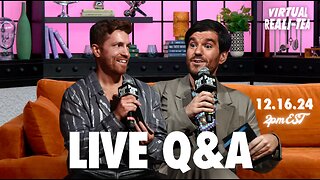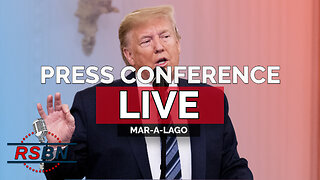Premium Only Content

#20 CrowdFunding
Crowdfunding is a method of raising funds for a project, venture, or cause by gathering small amounts of money from a large number of people, typically via the internet and social media platforms. It's a way to pool resources from a diverse group of individuals, often referred to as "crowd," to fund a specific goal. This approach is particularly popular for startups, creative projects, charitable initiatives, and social causes.
Here's how crowdfunding generally works:
Choose a Platform: There are numerous online crowdfunding platforms such as Kickstarter, Indiegogo, GoFundMe, and Patreon, each catering to different types of projects. You select a platform based on the nature of your project and the kind of funding you're seeking.
Create a Campaign: Once you've selected a platform, you create a campaign page that outlines your project, its purpose, goals, and what you plan to achieve with the funds. This page serves as the pitch to attract potential backers.
Set Funding Goals: You specify the amount of money you need to raise. This goal should be realistic and cover the costs associated with your project. If your campaign doesn't reach the specified goal, you might not receive any of the funds.
Offer Rewards or Incentives: Many crowdfunding campaigns offer rewards or incentives to backers who contribute at different levels. These rewards can range from exclusive merchandise, early access to products, or even credits in the final project.
Promote Your Campaign: Successful crowdfunding heavily relies on marketing and promotion. You use social media, email marketing, and other online channels to spread the word about your campaign and encourage people to contribute.
Engage with Backers: As your campaign gains traction, you'll receive contributions from backers. It's essential to engage with them, answer their questions, and keep them updated on the progress of your project.
Funding Period: Crowdfunding campaigns typically have a set timeframe during which they're active, usually ranging from a few weeks to a couple of months.
All or Nothing vs. Keep It All: There are two main funding models: "All or Nothing" and "Keep It All." In the "All or Nothing" model, you only receive the funds if you reach or exceed your funding goal. If you don't meet the goal, backers' contributions are usually not charged. In the "Keep It All" model, you receive whatever funds you've raised, regardless of whether you meet the goal or not.
Funds Disbursement: If your campaign is successful and you meet your funding goal, the platform collects the pledged funds from backers and typically deducts a platform fee. You then receive the remaining funds, which you can use to fulfill your project's objectives.
Project Fulfillment: With the funds received, you work on executing your project or idea according to the promises made in your campaign. It's important to maintain transparency and keep backers informed about your progress.
Crowdfunding provides a democratic way for individuals to support projects and initiatives they believe in, while also giving creators a chance to turn their ideas into reality without relying solely on traditional sources of funding. However, it's important to note that running a successful crowdfunding campaign requires careful planning, effective communication, and a compelling pitch to capture the interest of potential backers.
www.antharas.co.uk/ companies website or you can find it on Amazon!
#BusinessStrategy
#Entrepreneurship
#Leadership
#Management
#Marketing
#Finance
#Startups
#Innovation
#Sales
#SmallBusiness
#CorporateCulture
#Productivity
#SelfDevelopment
#SuccessStories
#PersonalBranding
#Networking
#Negotiation
#BusinessEthics
#TimeManagement
#GrowthStrategies
#MarketAnalysis
#BusinessPlanning
#FinancialManagement
#HumanResources
#CustomerExperience
#DigitalTransformation
#Ecommerce
#SocialMediaMarketing
#BusinessCommunication
#ChangeManagement
-
 8:04
8:04
AV
4 months ago#1149 Press release - Pension funds can fire up the UK economy
101 -
 LIVE
LIVE
Dr Disrespect
3 hours ago🔴LIVE - DR DISRESPECT - WARZONE - HUNTING SEASON
8,392 watching -
 1:47:05
1:47:05
The Quartering
2 hours agoHuge Drone Update, Kamala To Run Again, CNN Commits Treason & Trump Trolls On Drones
49.2K25 -
 2:21:16
2:21:16
Nerdrotic
3 hours ago $2.88 earnedThe Last Still SUCKS | Superman Returns | An FNT Square Up - Nerdrotic Nooner 451
58K3 -
 LIVE
LIVE
StoneMountain64
2 hours agoHIGH TIER raids while on missions
138 watching -
 25:58
25:58
Page Six
4 days agoLIVE: Danny & Evan talk hot reality TV takes, Bravo news & answer fan questions! | Virtual Reali-tea
2.95K1 -
 1:22:35
1:22:35
Russell Brand
2 hours agoScience, Faith, and Totalitarianism: A Conversation with Dr. John Campbell- SF514
87.3K95 -
 LIVE
LIVE
hambinooo
5 hours agoTHE PUBG GOAT
235 watching -
 2:08:23
2:08:23
Steven Crowder
6 hours agoDrone Conspiracy: Is the Government Hiding Something Huge From the American Public?
447K271 -
 LIVE
LIVE
Right Side Broadcasting Network
5 hours agoLIVE REPLAY: President Trump Delivers Remarks to the Press - 12/16/24
6,503 watching